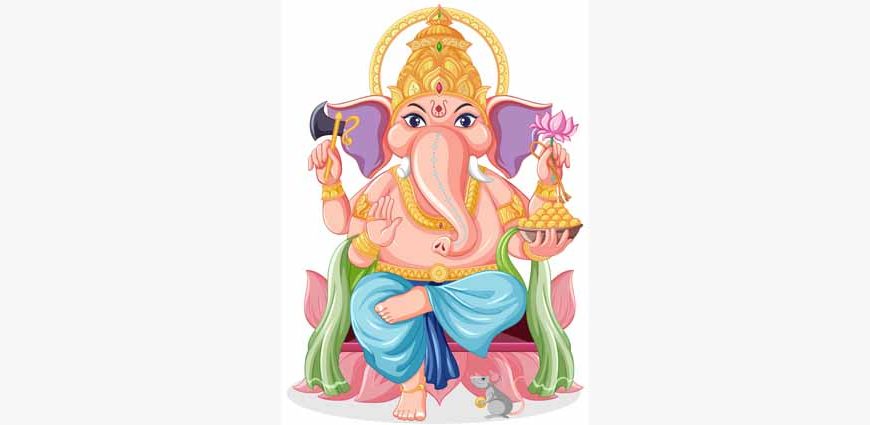Your kids might have asked the question ‘Why do we do visarjan of ganpati?’
Just like the arrival of a loved one brings us immense joy and their departure leaves us sad and teary, devotees of Lord Ganesh feel very similar emotions when they bring his idol to their homes at the start of Ganesh Chaturthi and when they take him for Visarjan on the last day. He is considered to be a member of the family who comes visiting once a year for a few days and then departs for his home in Mount Kailash.
Ganesh Chaturthi is celebrated every year for eleven days in the months of August or September. Ganesh Visarjan is a ritual of immersing Ganesha’s idol in a river, sea or any waterbody and is done to mark his journey back to his heavenly home in Mount Kailash where he will join his parents Lord Shiva and Parvati. In the eleven days of Ganesh Chaturthi, the Ganpati Visarjan date can be after one and a half days, five or six days, seven days and eleven days. Gauri Puja is also done during this time and so Gauri Visarjan is often done along with Ganesh Visarjan. This is the importance of Ganesh visarjan.
Importance Of Ganesh Visarjan for Children
On the first day of the festival, devotees place Ganesh’s idol in their homes and offices and on the last day they take out processions carrying their beloved idol for Visarjan or immersion. Many people wonder why we do Ganesh Visarjan. Lord Ganesh is worshipped as the Remover of Obstacles and the Lord of New Beginnings and devotees believe that when his idol is taken out for Visarjan, it also removes all obstacles from their homes and workplaces which are destroyed with his Visarjan.
The immersion of the idol signifies Lord Ganesha’s return to his divine abode, reminding devotees of the continuous cycle of life, death, and rebirth. This act of Visarjan is not just a ritual but a deeply spiritual experience for many, symbolizing detachment and the understanding that nothing in life is permanent.
Did your kids know about the Ganpathi visarjan significance?
The reason behind Lord Ganesh’s idol being immersed in a water body is because the ocean represents God or the Infinite and the idol is the soul which is seeking Moksha or salvation. The soul being immortal, leaves behind its mortal body to unite with the Infinite.
The tradition of Visarjan reminds people that all possessions are temporary and will soon be gone. Devotees bid farewell to the Ganesh idol during Visarjan but his presence stays with them in the form of energy.
Lord Ganesha’s idol is immersed in water as part of the ritual to send him back to his heavenly abode in Kailash, symbolising his departure from the earthly realm. Ganesh Visarjan is a time of reflection, thanksgiving, and hope for devotees as they bid farewell to Lord Ganesha, looking forward to his return next year. This festival, celebrated with great devotion and enthusiasm, continues to be a cherished tradition across the nation.”
– Economic Times
How Did the Tradition Evolve?
The month of August or September sees most of India and especially Maharashtra buzzing with activity as they prepare for the festivities to celebrate Ganesh Chaturthi. Lately, there’s been a lot of debate regarding the inconvenience caused by the processions and boisterous celebrations that are part and parcel of this festival. What is ironic is that this divide goes completely against the reasons that Ganesh Chaturthi became the decorated affair it is.
Ganesh Visarjan history goes back a long way and many believe that the celebration of Lord Ganesh’s birth goes as far back as 271 BC when the Satavahana, Chalukya and Rashtrakuta dynasties were still ruling. Others believe it was started by Chatrapati Shivaji to promote culture and nationalism among Indians. But what can’t be disputed is that originally this festival was celebrated as a quiet family affair but has now become a celebration where all sections of society come together.
The person responsible for this is Bal Gangadhar Tilak who after the Sepoy Mutiny of 1857 realised the need for uniting Indians who were divided because of the rigid caste system. Ganesh Chaturthi is a festival without caste barriers and hierarchy and just celebrates faith and joy among all strata of society. Tilak recognised this and used it to unite the people. This is one of the key moments in history related to Ganpathi visarjan significance.
In 1893, Bal Gangadhar Tilak introduced India to what is now referred to as Ganapati Visarjan, as a way to bring Indians from all walks of life together. This is where the Ganesh visarjan story first began. He brought people together to celebrate and this spread to other parts of the country like wildfire. Ganesh Visarjan became a meeting ground for people and encouraged gatherings without raising suspicion at a time when the British government had banned all public meetings.
Precautions During Ganpati Visarjan- 5 Key Safety Tips to Remember
Deafening music, long processions, trafficc jams, boxes filled with modaks and a general atmosphere of celebration are hallmarks of this festival. To avoid any mishap or possible dangers during Ganapati Visarjan, it’s wise to keep a few precautions in mind.
- Processions
- Crackers
- First-aid Box and Water
- Start Early and Be Punctual
- Precautions at the Seashore
Ganapati Visarjan is incomplete without a procession of people belonging to all age groups. They celebrate by dancing on the roads and before starting the procession you should always think about the route which the procession will follow. At least 2 people should take the responsibility of guiding the procession — one should guide the trafficc and other should lead the procession on the correct route. At least 4 people should hold ropes on both the sides of the processions as that will help people to move ahead easily and will be convenient for vehicles.
Crackers should only be lighted in open and wide spaces and definitely not on roads. Children should be kept at a safe distance from the crackers. If possible, crackers should be avoided to prevent pollution.
These two things should always be carried during Visarjan to take care of any small mishap. They can help you tide over a situation till help arrives.
The Visarjan procession should start at the right time and quite early otherwise the roads and seashore can get very crowded. Also, the police might not allow you to play music on the road if you are late. In any case, rather than playing loud music on the road, an Aarti or chanting can be done during the procession as this is cost-effective and reduces noise pollution.
If the idol is too big a boat can be arranged and only people who can swim should enter the sea. Children should be kept away from this task and lifeguards should be present. The idol can also be immersed in the artificial ponds created by the government wherever available. As far as possible try to celebrate an eco-friendly Ganesh Chaturthi as it’s safer for you and others. Pollution is increasing so you should buy small Ganesh idols and learn how to do Ganesh Visarjan at home.
Conclusion
Festivals are a time of joy and celebration and really brings people together. But it’s also important to understand the significance of the festival we are celebrating as well as the history behind its traditions and the steps we need to take so that we and the people around us are safe. In this article, we have provided you detailed information on the Ganesh Visarjan story for your kids. For more insight into Ganesh Visarjan and how it evolved, you can touch base with the EuroKids website.
Which of these tips are you going to practise while performing Ganpathi Visarjan with your kids?
For informative and accurate articles on all things related to your new born-toddler’s development, growth, health and nutrition, follow EuroKids Blogs and do check out our nationally recognized preschools – EuroKids for the first step in your kid’s educational journey!














